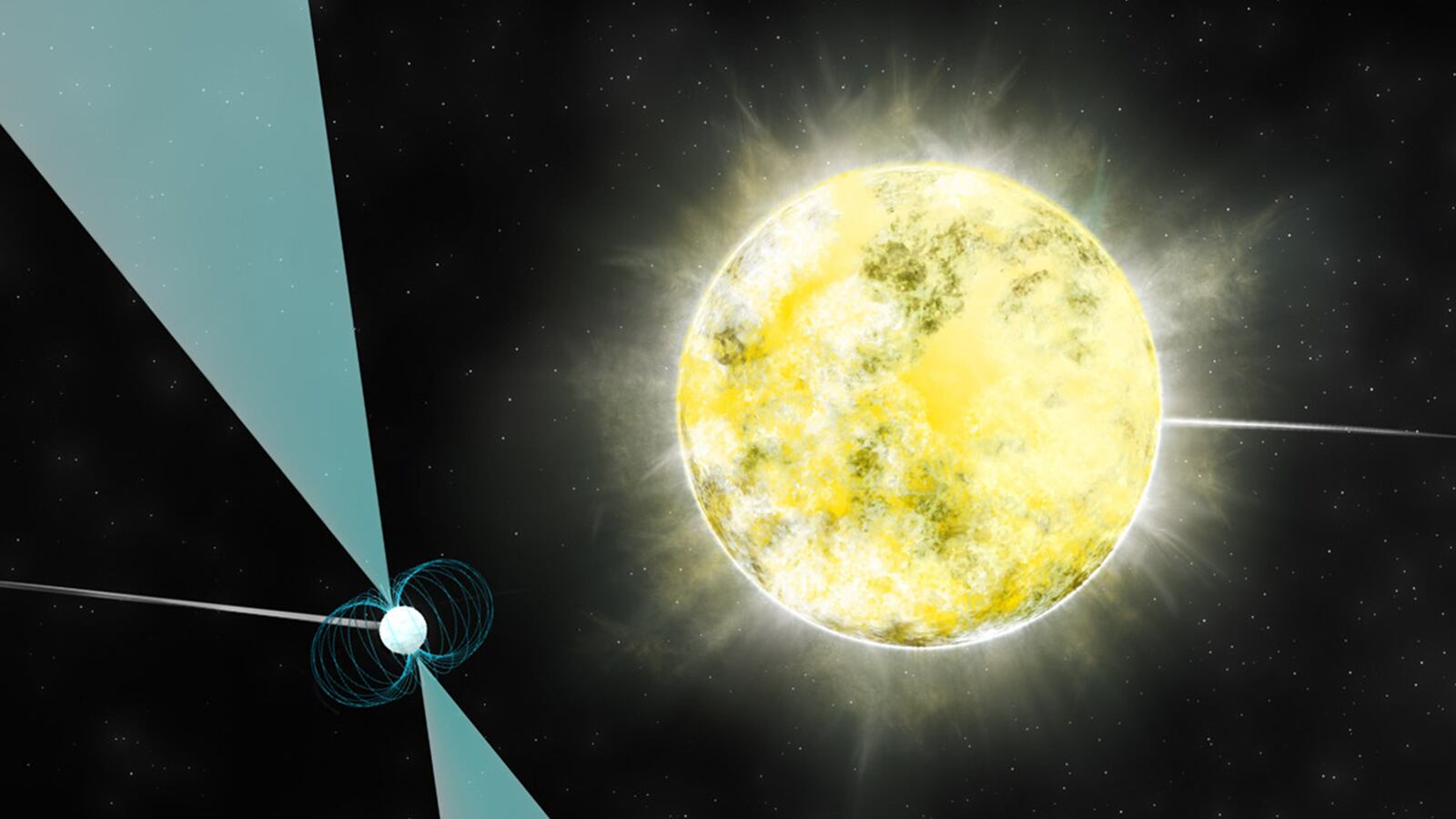Here’s a weird detective story: astronomers detected the presence of a hidden object locked in orbit with a companion that we can see. This object is about the mass of the Sun, and all indications are that it’s a white dwarf, which are well known and well studied. Yet even powerful telescopes can’t see it. Based on its invisibility, researchers concluded it must be the lowest temperature white dwarf yet detected, cool enough (relatively speaking) that its interior is solid, almost like an Earth-sized diamond.
You read that right: Astronomers worked out what this invisible object might be because they can’t see it to measure most of its properties. It’s an almost Sherlockian process of eliminating the impossible, or at least the unlikely, leaving a solution based on scientific deduction. Unlike a Sherlock Holmes story, though, the tale doesn’t end with a smug explanation on the detectives’ part; the true resolution of the mystery may yet be discovered.
First, let’s discuss suspects. The first clue is the behavior of a pulsar—a tiny but massive object that rapidly rotates, sending flashes of light toward Earth. Astronomers determined that it was in mutual orbit with a companion object, based on the way the pulsar’s light fluctuated over time. Using the laws or gravity and orbital motion, they measured the companion object’s mass to be just a little greater than the Sun’s.
This binary system is right next door to Earth, in cosmic terms—it’s only about 900 light-years away. So the pulsar’s companion can’t be a star, since it would be visible in telescopes. It might be another pulsar, but it would have to be very low-mass for that type of object, and the orbit looks wrong compared with other two-pulsar binaries astronomers have studied.
That leaves one other improbable but ultimately most likely culprit: a high-mass, low-temperature white dwarf.
White dwarfs aren’t as bizarre as black holes or neutron stars, but they’re still unlike anything we see in ordinary life.
A star like our Sun will eventually convert all its available nuclear fuel—hydrogen at first, then helium as it ages—into carbon and oxygen, thanks to nuclear fusion in its hot core. However, these stars don’t have enough inner heat to keep the process going past that point, so fusion just stops. The stars shed their outer layers, exposing the remains of the core—a dense, hot object made of carbon and oxygen.
That remnant is a white dwarf. The specific properties of the white dwarf depends on the mass of the progenitor star, but in general they are roughly the mass of the Sun (give or take), but the physical size of Earth. That’s a lot of mass packed into a small volume, so the interior of a white dwarf is a stew of high temperature, high density, and high gravity.
The name “white dwarf” is slightly misleading. While some white dwarfs look white, meaning we’re seeing light from all colors of the rainbow in their spectrum; others appear blue in color, thanks to their very high temperature. However, the pulsar’s hidden companion can’t have such high temperatures, or else it would be visible. That means it must be “cold,” in astronomical terms.
To avoid detection, the invisible white dwarf in last week’s announcement is “only” about 3000 Kelvins (2700º C, or 4900º F) or less. If we could see it, it would appear red in color. (The name “red dwarf” is already taken, and not just by a science fiction comedy program; red dwarfs are ordinary stars that are simply small and red.) The small size of a white dwarf makes it much more difficult to see than a star with the same temperature, so we have the perfect combination of properties to dodge detection.
Additionally, that temperature means that the carbon inside the white dwarf would be crystallized, rather than the fluid stew that’s typical for hotter objects. It’s not quite a diamond in the sky: diamond refers to a very specific configuration of carbon atoms. However, the temperature and pressure imply that the white dwarf is more like a diamond than anything else.
So how weird is this “solid white dwarf” possibility? Most white dwarfs are lower mass than the pulsar’s companion, but it’s still within the realms of possibility. It’s also not shocking to find a white dwarf with such low temperature. Astronomers think there are many out there, but they are just too hard to see. We were fortunate in this case because it’s in a binary system, so we could use gravity to find it, but we can’t always be so lucky.
If the authors of the new paper are right and the invisible object is a white dwarf, then we should be able to detect it eventually, we just need a bigger telescope or longer observation time to catch enough light. Until that time, or unless we figure out another likely suspect, we’re left with an intriguing probable solution to the mystery. It’s not narratively as satisfying, but science and real life rarely are.





